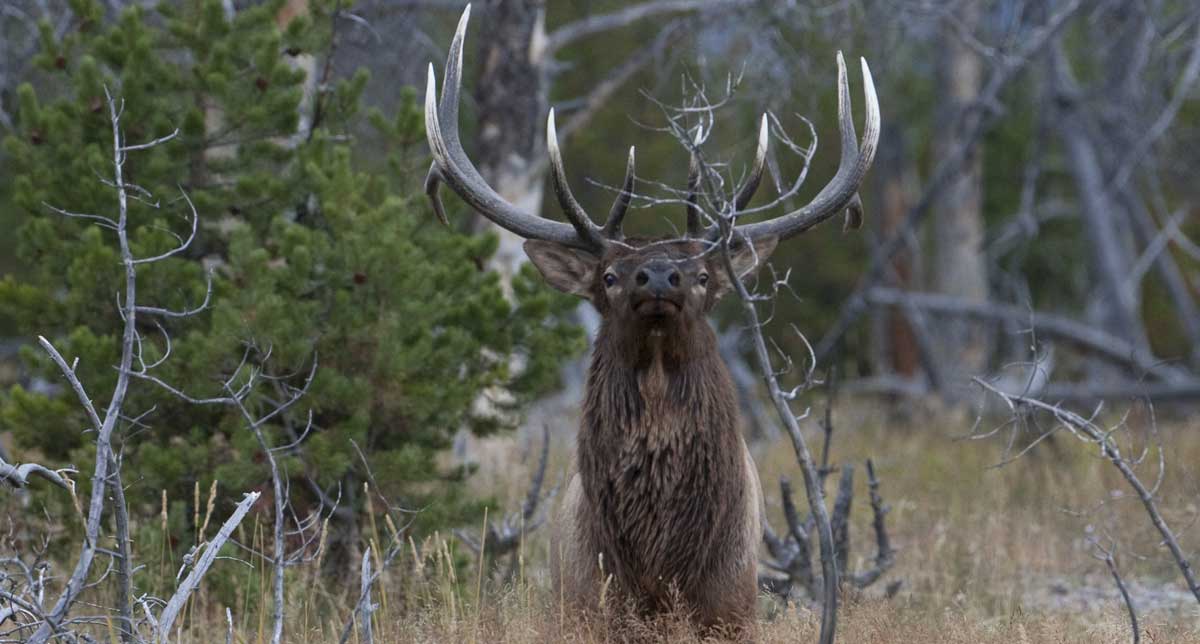Over three days in June 2018, cow elk badly pummeled two people after they got too close to their calves in separate incidents in Yellowstone National Park. Both assaults resulted in extensive, traumatic injuries. The world’s first National Park, Yellowstone is 146 years old and saw over 4 million visitors in 2017. Increasingly, those visitors are getting too close to wildlife, geysers, waterfalls and other potentially fatal attractions.
As with bison, far too many people view normally stately elk as docile. With several habituated populations in the park, especially at popular Mammoth Hot Springs—the situation is ripe for elk-related injuries. More than 40 percent of average annual visitors enter the park during early fall, coinciding with the rut when bulls are at their most aggressive and least predictable. (For an up-close look at the perils of such habituated herds, see “The Bulls of Banff” on page 114.)
Cows defending calves in spring, bulls amped on testosterone in fall—those are the top twin threats for human injury or worse. So far, all of the documented physical elk-human encounters we could find (excluding those that involve vehicles traveling at high speeds) have yielded only injuries, not death. But make no mistake, these beasts are more than capable of it, given the perfect—or, rather, imperfect—scenario. Such aggressive encounters are on the rise in national parks across North America. If and when the first fatality comes, the cause might actually be falling thousands of feet. In Grand Canyon National Park elk left two people with broken legs in recent years, and several tourists have been menaced while they were only steps away from the South Rim.
Park rangers charged with preventing such conflicts in national parks across the West report the huge majority are caused by people approaching within 50 feet of elk. Nobody wants to be that first statistic. Give park elk their space.
